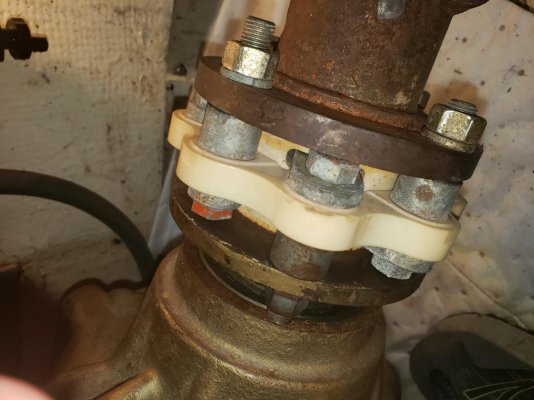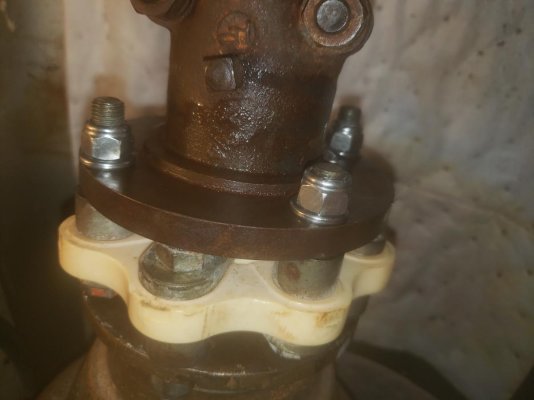SailorGoneBad
Veteran Member
I was in my engine room on an unrelated task and I noticed one of the nuts holding the drivesaver onto the driveshaft was sitting on the floor of the boat under the driveshaft. So I stuck it back on and tightened it. I noticed that one of the other nuts was finger loose. I have no idea what the make and model of the drivesaver is (was on the boat when I bought it).
This is a 1.5 inch shaft on a Velvet Transmission on a Ford Lehman 120. I figure these should be re-torqued but don't know how much torque should be used.
Any insights appreciated.
Thanks.
This is a 1.5 inch shaft on a Velvet Transmission on a Ford Lehman 120. I figure these should be re-torqued but don't know how much torque should be used.
Any insights appreciated.
Thanks.



